A Beautiful Hiding Place | Martha’s Vineyard
Let an insider be your guide to finding refuge on the fabled Massachusetts island of Martha’s Vineyard.
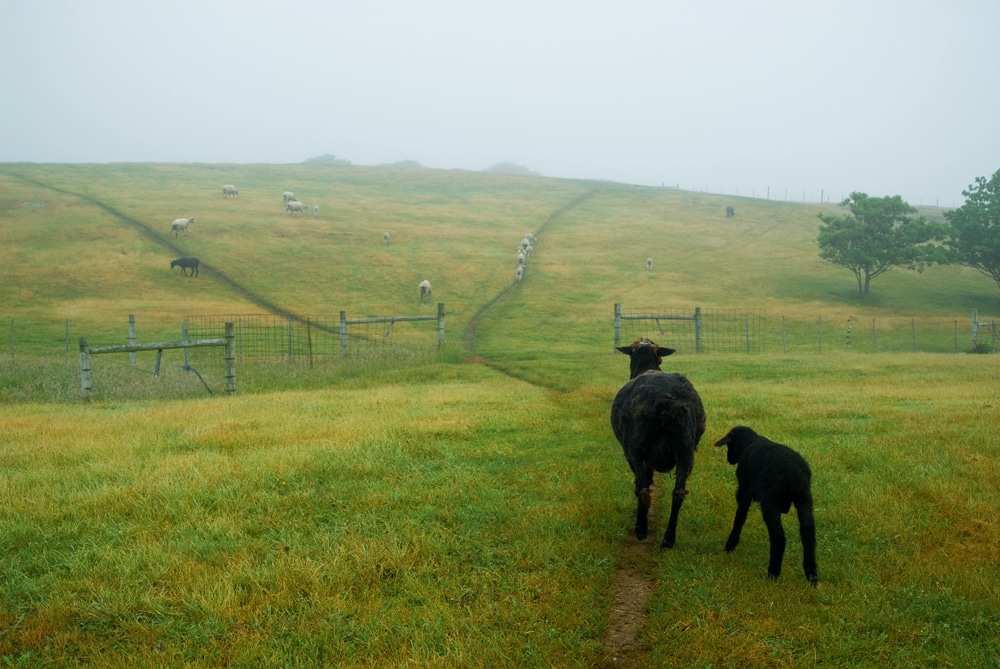
The rolling pastures of Allen Farm, the oldest continuously working farm on Martha’s Vineyard (c. 1762).
Photo Credit : Alison ShawI sat on my Oak Bluffs porch one late summer evening, reading a magazine and looking at the wash of sunset colors play out over Farm Pond. The reeds crowding the edge of the pond chattered; Canada geese squawked. A woman in a straw hat pedaled up the dirt road on her bicycle. My normally vocal dog stayed quiet as she approached.
“Wow,” she said. “What a great place to hide out!”
“It is!” I agreed.
As she rode away, I thought about what she said, what she meant in the moment. No one could see me; I could see just birds, the pond, and, in the distance, a few taillights heading up Beach Road toward Edgartown. I did feel hidden.
I thought of all the other words that come to mind when I think of hidden: sanctuary, secret, refuge, escape, safety. The woman on the bike might not have intended to say this, but the truth is, if you have to find refuge somewhere, Martha’s Vineyard is a pretty good place to do it.

Photo Credit : Alison Shaw
Last March, many of the 17,000 of us who are year-rounders thought we would have the island to ourselves for the summer, with sidewalks, trails, and beaches largely empty of tourists. It will be an old-fashioned summer, we said. Our days would be full of hikes, swimming, board games, and backyard burgers—none of the fancy events and swanky restaurant scenes that had come to be part of the Vineyard’s summer social life over the past 30 or so years. Old-fashioned, like decades before, when at most a few seasonal residents escaped to their cottages here for the summer.
Then the opposite happened. People with homes they usually visited for only part of the summer arrived in March—and they stayed. Visitors arrived, beckoned by the myriad opportunities to enjoy the outdoors, on bikes and trails and beaches and ponds. April looked like July.
But it would still turn out to be an old-fashioned bird-watching/porch-sitting/drive-in-movie summer. Even when the island is full of visitors, you can hide here: We’re 96 square miles (making us the third-largest island off the East Coast), with miles of beach and pond shoreline, and a third of our land under conservation, much of it accessible to the public via hundreds of trails.
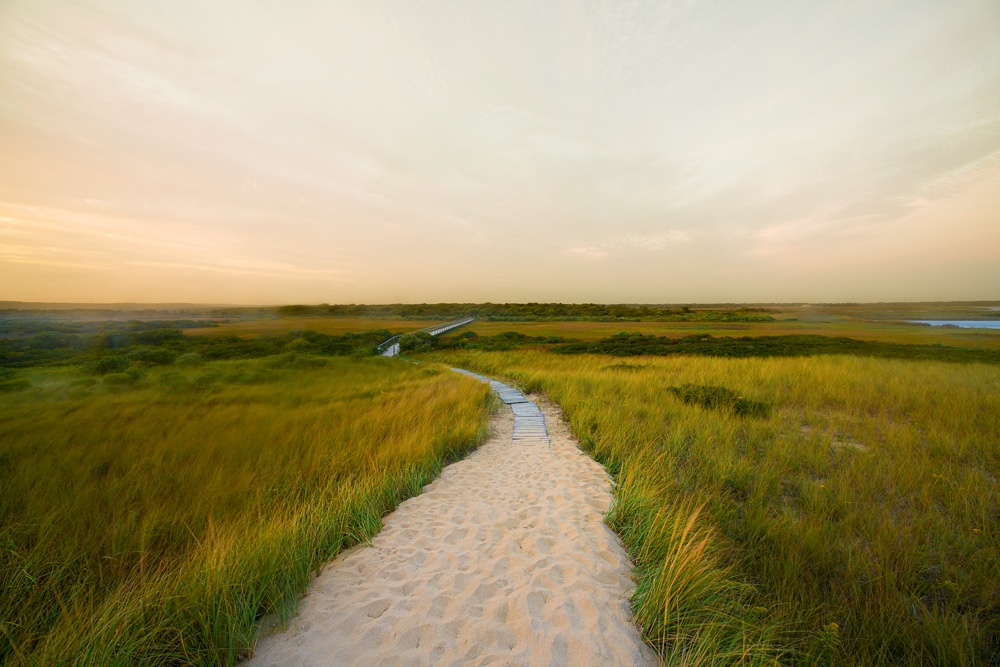
Long before this pandemic, Martha’s Vineyard has been a place of refuge. We are an island of refugees, of people who arrived over centuries to stay under the radar, to do things their way. Even the indigenous Wampanoags left their original tribe to settle on the southwest corner of a land that was not even yet an island. Portuguese whalers jumped ship to stay here, rumrunners hid out just offshore, and toward the end of the 19th century, prosperous Blacks found safety and peace here. In the late ’60s and early ’70s, our population increased by 50 percent, as counterculture types found it easier to lead the life they wanted here—maybe fishing, maybe farming, maybe making cheese or pounding nails. Martha’s Vineyard also draws celebrities (something for which we are known but is really only a tiny part of our identity): Writers, presidents, and movie stars all come to hide in a place where no one bothers them.
In the years I’ve been living on Martha’s Vineyard, I’ve gotten this question dozens of times: Why would you live in a place that is so hard to get to? So hard to leave?
And I always say, Because it’s so hard to get to, and so hard to leave.
Which makes it a very good hiding place, indeed.

Photo Credit : Alison Shaw
A porch-sitting island
If you had to pick one architectural feature to characterize Oak Bluffs, it would be the porch. Our town grew up around the tents that became gingerbread cottages (all with front porches) in the Martha’s Vineyard Camp Meeting Association. And I think every single porch in town was used all day long this past summer. Riding my bike through neighborhoods jammed with cottages was like passing stage sets: On the porch of an inn, a man strummed a guitar; down the block, neighbors shouted jokes to each other across the street. Grandmothers played cards with kids. Generations of women drank wine and hooted with laughter. As far as I could see, the entire social life of Martha’s Vineyard was occurring on the porches of Oak Bluffs, as it was on the porches, patios, and decks all over the island. On my own porch, friends came and we watched birds, played Scrabble, or ate takeout from the Sweet Life Café, our favorite spring and summer indulgence.
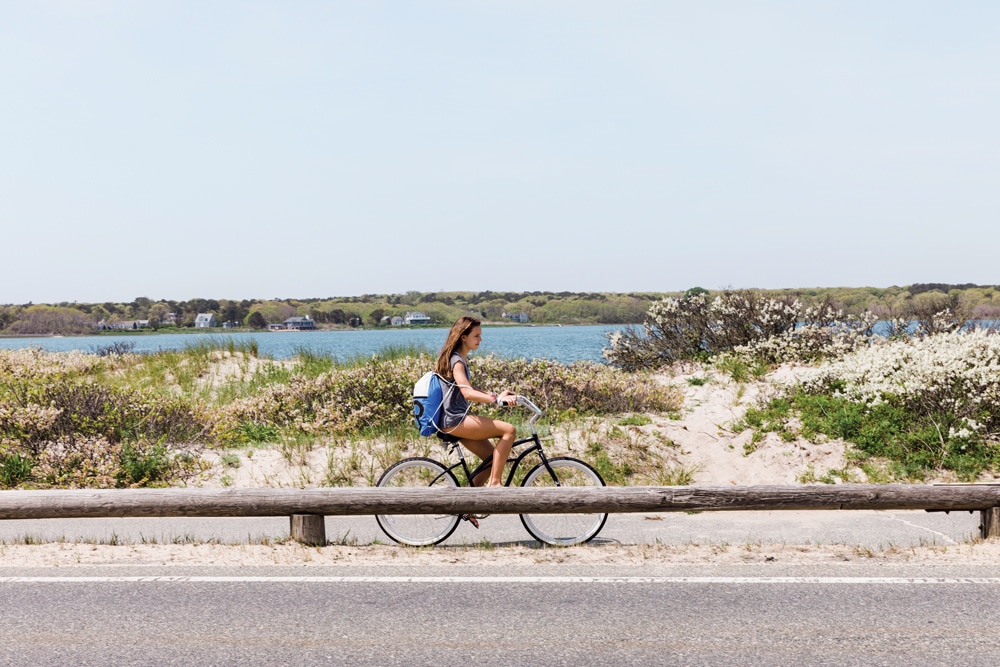
Photo Credit : Elizabeth Cecil
It’s better on foot, or by bike
We have more than 200 public trails. Starting in early spring, a friend of mine walked a different trail each day with her daughter, and they never ran out. Most mornings, my neighbor Laurel and I walked our dogs several miles a day—heading up-island to Sepiessa Point in West Tisbury, where we can walk out to the Tisbury Great Pond, or taking the counterclockwise Land Bank Trail that winds through the woods around Farm Pond, through Hart-haven (a neighborhood of dirt roads and cottages founded 150 years ago), and back out to Beach Road along Nantucket Sound.
At “the Inkwell,” the town beach in Oak Bluffs, the Polar Bears gather to swim and exercise early in the morning. The group was started about 80 years ago by Black women who were spending the summers in cottages nearby. These days, men and women of all races stand in the water, linking hands. When they count their exercises in unison, it sounds like chanting, the sun rising up behind them, the ripples spreading out to the Vineyard from their circle.
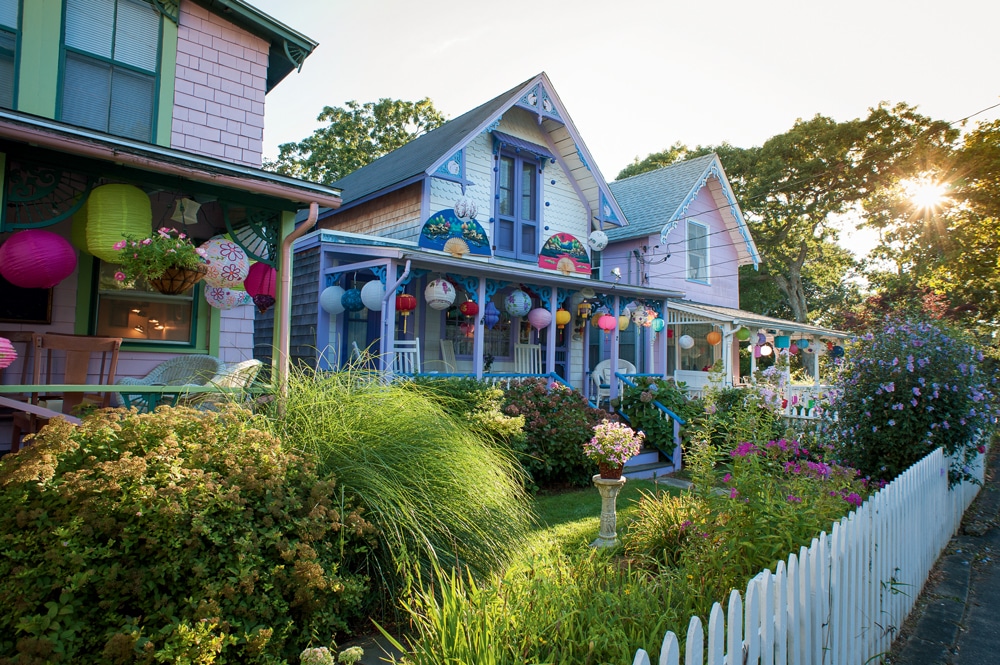
Photo Credit : Alison Shaw
On warm days, I put my dog in a backpack and ride my bike around the wide streets of Oak Bluffs. Sometimes I ride past the gingerbread houses of the Camp Meeting Association, or simply the Campground. If this had been a summer typical of the past 160 years here, this is what you would have seen on the third Wednesday in August: cottage owners hanging paper lanterns, some as old as the cottages themselves, preparing for the Grand Illumination. By nightfall, 10,000 or more people would wander the lanes admiring the twinkling lights.
I ride through the Campground, taking a different route each time, and out the other side to the Oak Bluffs harbor. I might stop at Suesan Stovall’s Groovy Sue Gallery, located in the back of her mother’s big house on Spruce Avenue overlooking Sunset Lake. Suesan creates mixed-media collages using bits of old advertisements, sheet music, buttons, maybe tiny spoons, her own photography and painting. There’s always a new work; some are political, some are personal, some are both, with titles like “Hope” and “There’s a Place at the End of the Road” and “Looking for Guardian Angels.”
From there I pedal over to East Chop, where, despite my 35 years of biking around, I still find new routes. Though most visitors to the Vineyard know about the historic Methodist Tabernacle in the Campground, one of the oldest wrought iron structures in the country, many don’t know that there was a wood-frame Baptist Tabernacle in what has become known as the Highlands of East Chop. The structure is no longer there, but Baptist Temple Park remains as a little wooded dell threaded with paths.
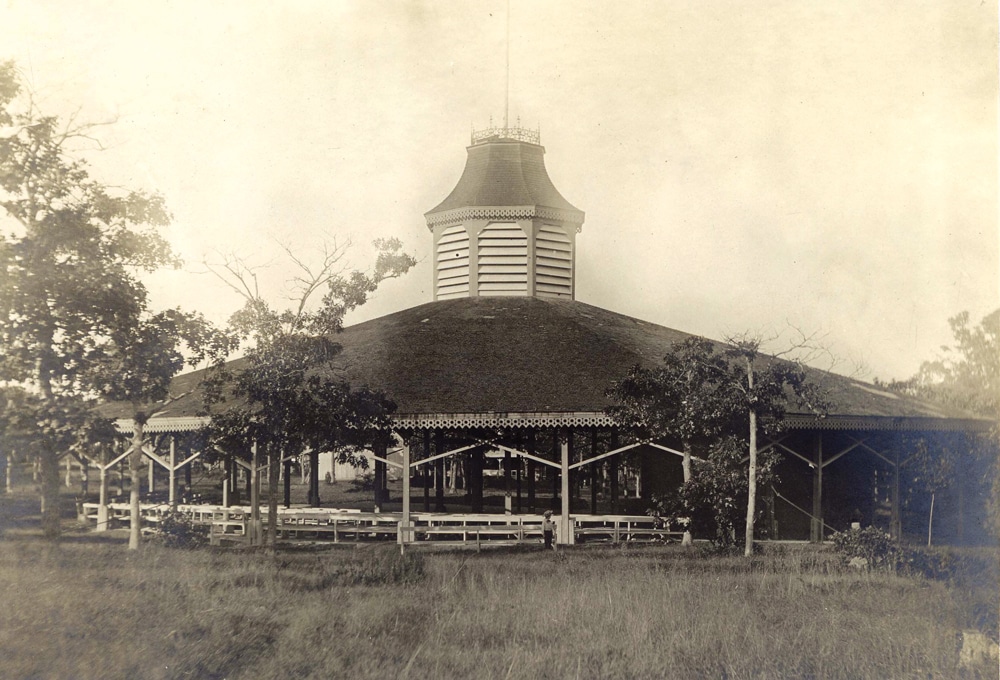
Photo Credit : Courtesy of Martha’s Vineyard Museum
In the late 19th and early 20th centuries, the Baptist church in the Highlands was welcoming to the newly prosperous Black vacationers from Boston and New York who’d begun to visit Martha’s Vineyard, and so it became an enclave for them. Harlem Renaissance luminaries such as novelist Dorothy West lived here; so did Adam Clayton Powell Jr. In 1903, Charles Shearer, who had been born into slavery but later prospered in Boston, bought a cottage overlooking Baptist Temple Park with his wife, Henrietta. They soon expanded it and opened a summer inn, catering to Black guests who were not welcome at other island establishments. Shearer Cottage became popular with Broadway stars such as Paul Robeson and Ethel Waters. The Commodores have stayed here; civil rights hero John Lewis visited a few years ago. Many Black homeowners in Oak Bluffs can trace their families’ first visits to the island back to Shearer Cottage.
Author Jill Nelson, who swims with the Polar Bears most mornings, described what Oak Bluffs meant to her in her book Finding Martha’s Vineyard: African Americans at Home on an Island: “Part of the magic of [the Vineyard] is that we were, all of us, more free here than anyplace else. On the Island, we did not have to worry about personal security. As important for African Americans was that on the Vineyard we were insulated from many of the racial assumptions and expectations, most of them negative, that at least intruded upon, and at worst defined many of our lives off-Island.”
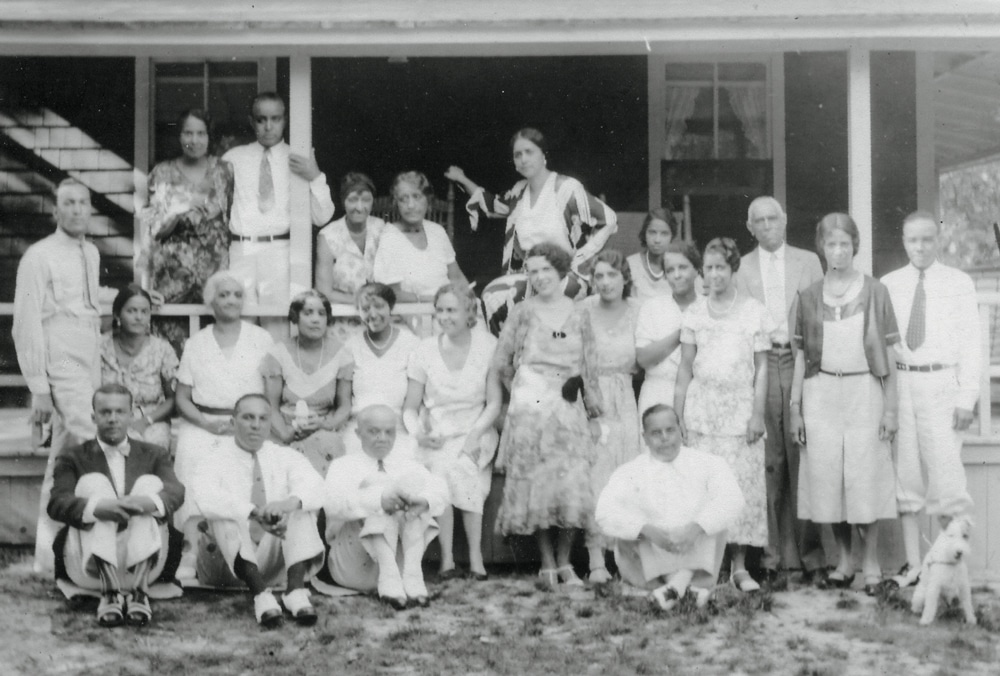
Photo Credit : Martha’s Vineyard Museum/Lee Van Allen
Road-tripping to Aquinnah
In a year of traveling nowhere else, I traveled my own island. Early one evening, I get into the car, and I drive west. I head for Aquinnah, the town at the southwest corner of the triangle that is Martha’s Vineyard. It feels like a journey: I pass through the State Forest, and Alley’s General Store in West Tisbury; through the rolling hills of Chilmark, the roads bounded by stone walls centuries old; past Beetlebung Corner, where on most summer mornings this past year islanders would gather to kneel for nine minutes in honor of George Floyd. There are fewer trees and more views of water as I get to Aquinnah, which means “end of the island” in Wampanoag. For millennia, Aquinnah has been home to the Wampanoag people, who called the island “Noepe,” meaning “dry land amid the waters,” which suited their fishing and farming vocations. In her book Moshup’s Footsteps, Helen Manning describes the legend of how the tribe came to be in Aquinnah, when Martha’s Vineyard was still part of the mainland:
“More than 5,000 years ago, [the giant] Moshup got a glimpse of the coastal plan and told his father that was where he wanted to settle; there was a magical call to him. Everything was perfect there and no one was yet continuously living on the coastal plain … Moshup dragged his great toes, permitting the waters of the ocean to rush in and surround the land we now know as the island of Martha’s Vineyard. He dragged his foot once again and the majestic Aquinnah cliffs appeared.”
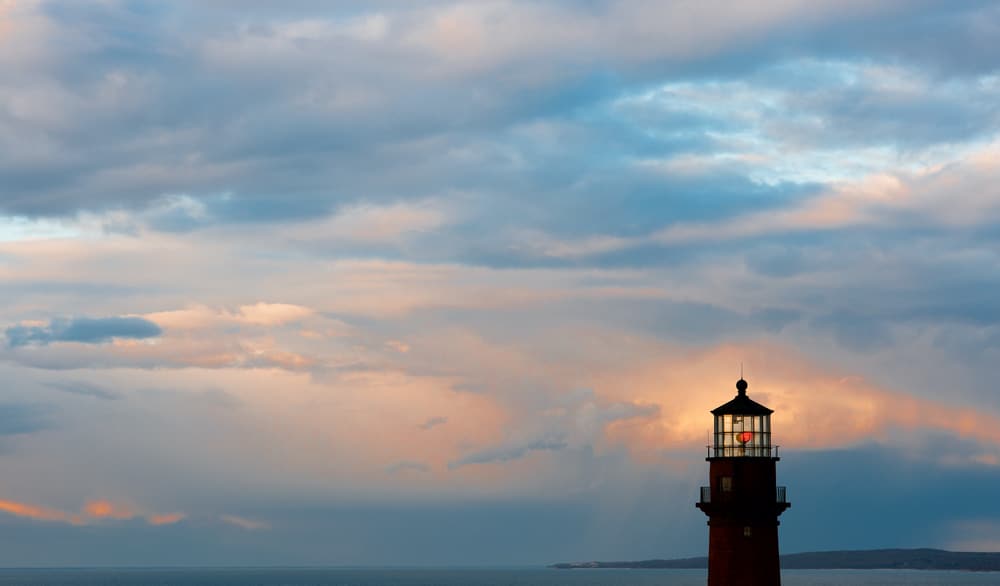
Photo Credit : Alison Shaw
On this evening, I am headed for the restaurant at the Outermost Inn, a laid-back but luxurious shingled inn on Lighthouse Road. Hugh Taylor, one of the musical Taylor family that includes James, owns the Outermost with his wife, Jeannie. Hugh also launched one of the Vineyard’s more delightful modes of transportation: the Menemsha-to-Lobsterville bike ferry.
Permit me to digress. Picture this: You are riding your bike around up-island, and you get to Menemsha, that little fishing village where Quint had his boat charter business in the movie Jaws. Maybe you have a soft-serve ice cream from the Galley. Or you wander around the Ruel Gallery and talk to painter Colin Ruel and his wife, jeweler Nettie Kent. Or maybe you take a lobster roll from Larsen’s and sit on the beach. Either way, eventually you’re looking across Menemsha Bight, and across this open water is a very inviting beach, and you think, How do I get over there? And you look at your Google map and you think, That’s a pretty long bike ride. And just as you’re contemplating how badly you want to be on that deserted-looking white sand beach, a man steering a small pontoon boat pulls up to the dock near the Galley, and a few people roll bikes off it. You notice some other bikers waiting, and they get on the bike ferry—and then, so do you. The little ferry goes back in the other direction, and in a few minutes you roll off onto Lobsterville Beach. A bike is really the only way to get to Lobsterville, because there’s very little parking for anyone other than local residents, and the bike ferry is the only way to do it and not take all day.
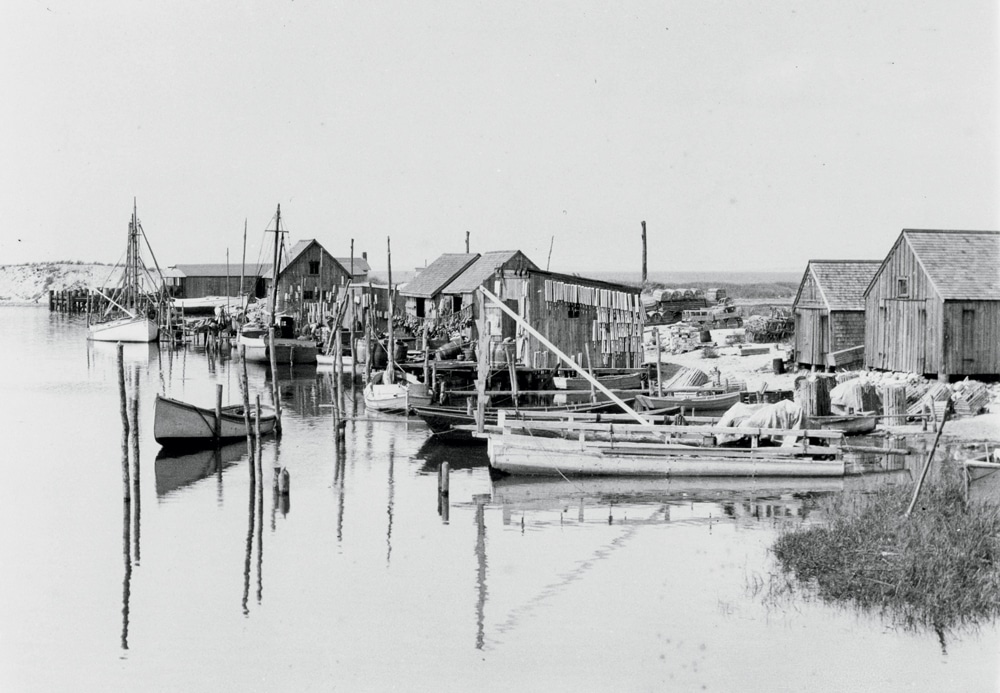
Photo Credit : Courtesy of Martha’s Vineyard Museum
Back to dinner at the Outermost: In winter most years, social life on Martha’s Vineyard is a series of dinners at people’s houses, sometimes potluck, mostly casual. We joke that when fall comes to the island, we get to see the faces of our friends again, so dispersed are we during the bustle of most summers. This summer—with no fund-raisers to attend, no visiting relatives, no bars or indoor dining—outdoor dinner gatherings are the thing.
We sit under lights strung from trees, which for a second lets me imagine I’m in Italy, or in a prosecco commercial. Deer stare at us from the hills sloping west. The sun sinks into Vineyard Sound. We toast each other, friends, and the amazing food.
At one with the water
So many shorelines tangled with bayberry, egrets and hawks circling, otters scampering across dirt paths—all quiet, but for your paddles. To me, Martha’s Vineyard’s magic is in its ponds; paddling is the way to find what would otherwise remain hidden. We have 27 estuarine ponds and more than 60 freshwater ponds, with hundreds of miles of shoreline and dozens of public access points. One day while making a routine circle around my pond with my dog, I see two little creatures staring at me from the water’s edge. Amber, with white spots and large dark eyes, they’re so still I think they are decoys. I quietly paddle closer. Two baby deer stare right at me, and then they are gone.
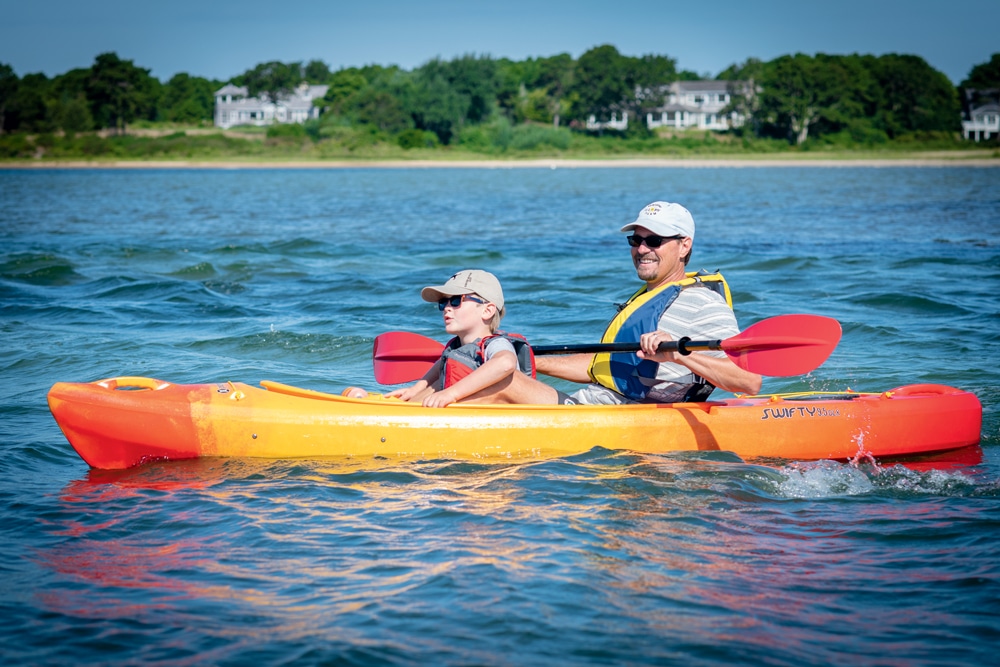
Photo Credit : Alison Shaw
Last summer, author Wallace Nichols, who has a brother on the island, spoke at the Oak Bluffs Library about his book Blue Mind. When we’re around water, says Nichols, “our breathing rate slows down, our heart rate slows, our skin temperature goes down, and our cortisol levels drop, leading to a reduction in inflammation. In short, our chemistry changes for the better.”
Our chemistry has changed for the better, I can state. It’s August, and we’re on a deserted beach on Martha’s Vineyard. Across the water, we can see cars parked along Beach Road, from Oak Bluffs to Edgartown. But here we sit, watching least terns and sandpipers, seeing an occasional kayaker or paddleboarder, enjoying quiet, sun, and companionship.
Hiding in plain sight.
Bonus!
Get Jamie Kageleiry’s Insider’s Guide to Martha’s Vineyard
More Photos from Martha’s Vineyard by Alison Shaw
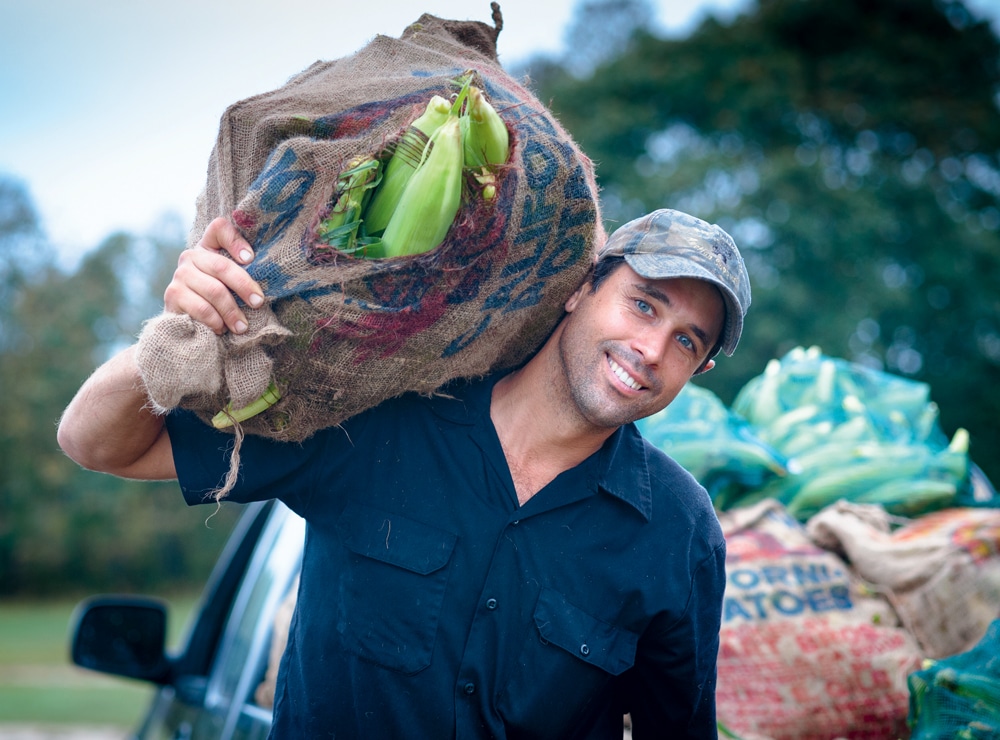
Photo Credit : Alison Shaw
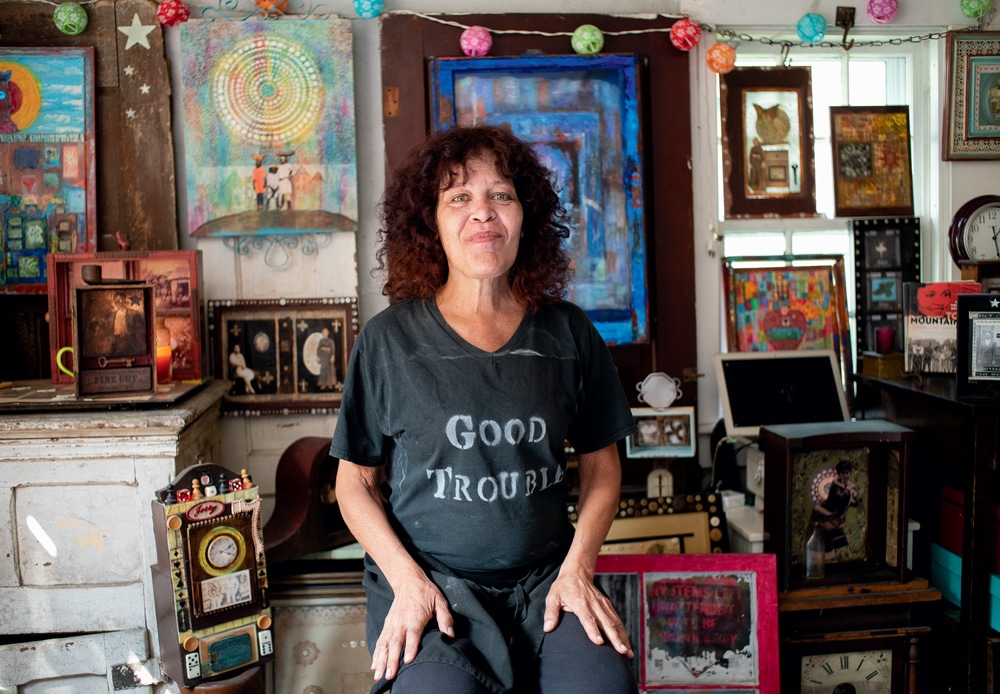
Photo Credit : Alison Shaw
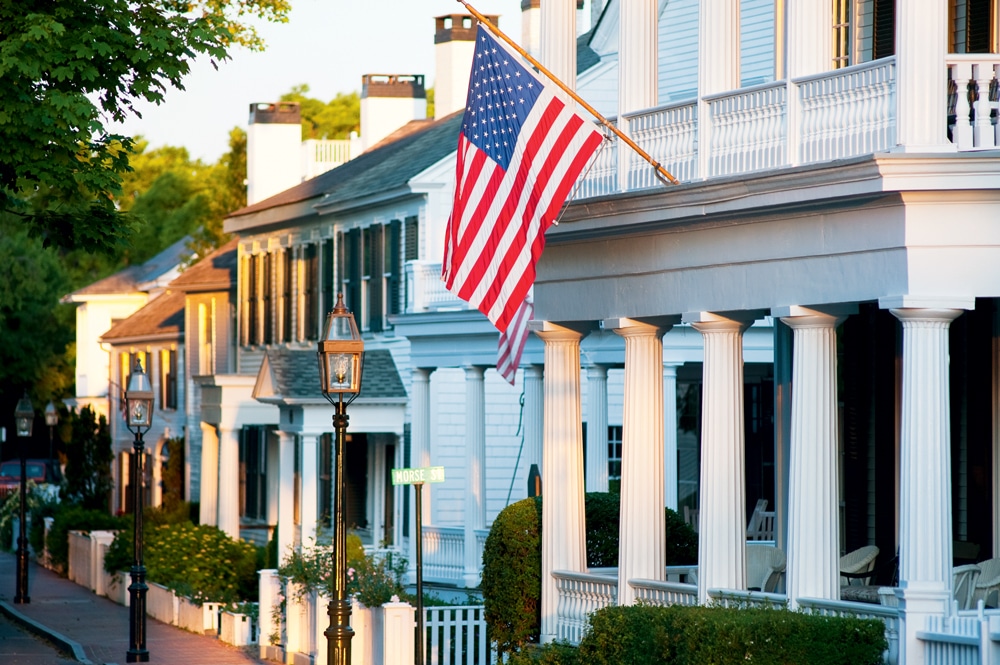
Photo Credit : Alison Shaw
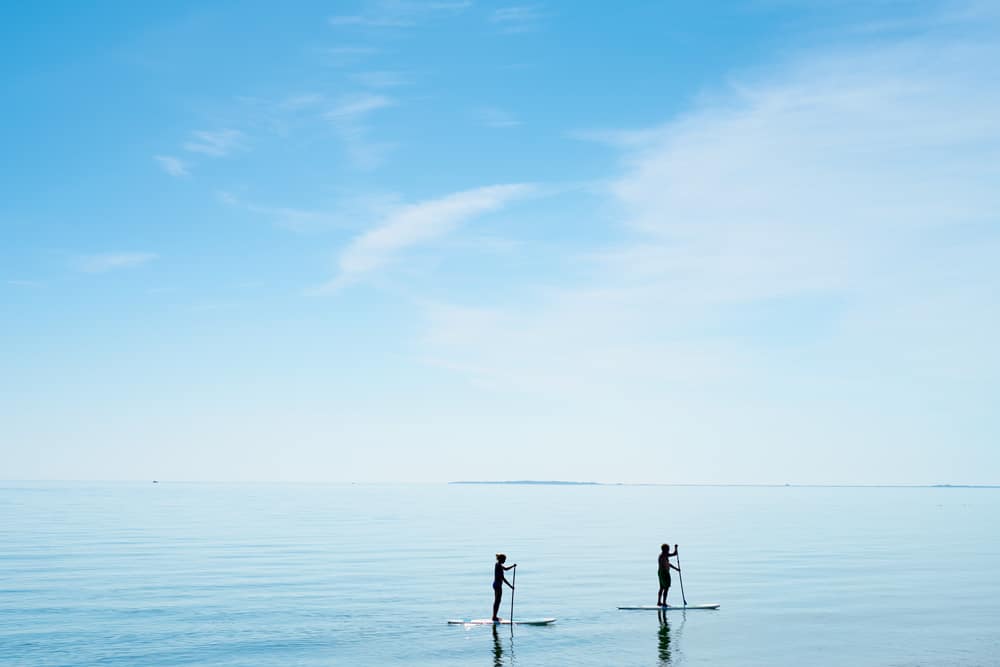
Photo Credit : Alison Shaw

Photo Credit : Alison Shaw

Photo Credit : Alison Shaw
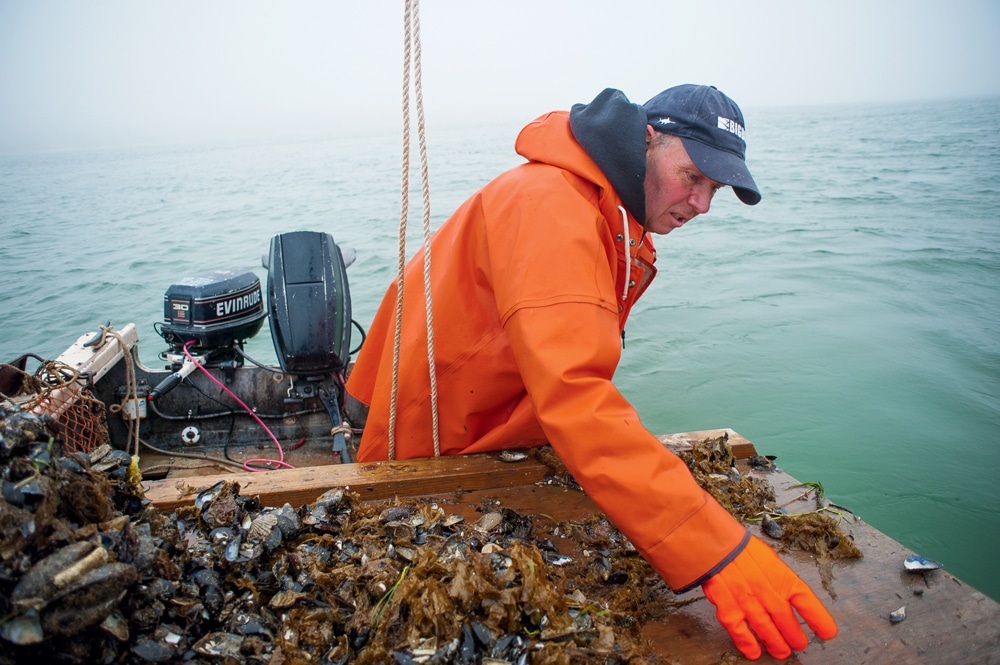
Photo Credit : Alison Shaw
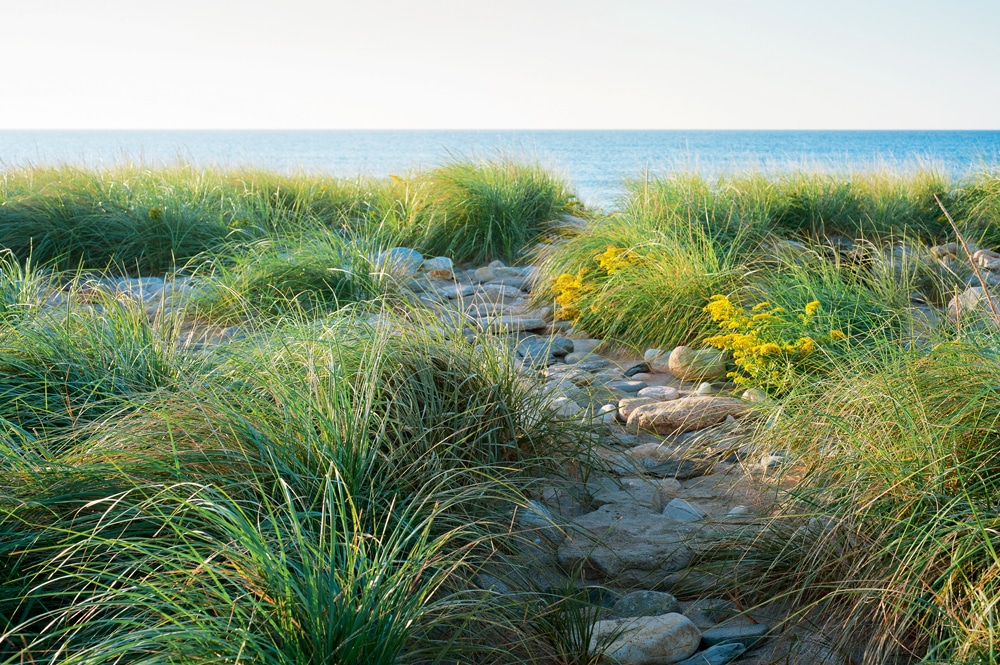
Photo Credit : Alison Shaw


